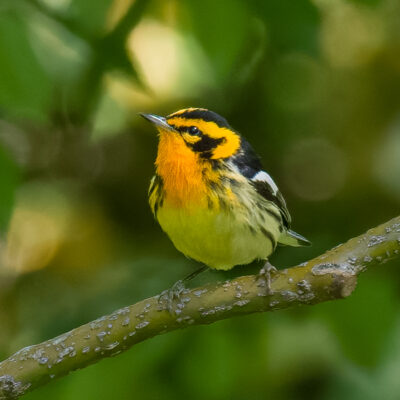 by Jean Favara
by Jean Favara
Vice President of Conservation
St. Louis Audubon Society
As we have continued to expand our suburban and urban areas, we have brought our habit of lighting the night with us. We light our homes, businesses, and streets, not considering the effects of the indiscriminate use of artificial light on ourselves and the plants and animals around us. According to one study, (Falchi et al., 2016), many (83%) now live in a world with a light-polluted sky and are no longer able to see the Milky Way. Organizations like the Missouri Chapter of the International Dark- Sky Association are working to increase awareness about light pollution and help all of us learn ways to use the correct type of lighting wisely to mitigate the effects of light pollution while saving energy.
Birds can especially be impacted by our use of artificial lighting at night. Every year billions of birds migrate between their breeding and wintering habitats. St. Louis sits on the Mississippi Flyway which is used by 60% of North American songbirds and ~325 species during their migration flights in the spring and fall. Light pollution can cause migrating birds to lose their ability to navigate, become confused and increase the chance of death due to collisions or exhaustion. St. Louis has been ranked in one study as the 5th most dangerous city during spring migration for birds and the 6th most dangerous city during the fall migration. That is why St. Louis Audubon Society has established the BirdSafeSTL project and through partnering with Lights Out Heartland, is working to reduce both light pollution and glass collisions in our area.
During the fall 2020 migration period, SLAS initiated BirdSafeSTL bird mortality surveys in downtown St. Louis to understand the dangers birds face as they migrate through our area. Now we are following up with a Lights Out campaign during May and September of 2021. We are asking businesses to support Lights Out Heartland by committing to eliminating or reducing their lighting footprint during these high migration intensity months. Steps such as turning off unnecessary exterior and interior lighting, using timers or motion sensors, and making sure external lighting is down shielded will all reduce light pollution, and save both energy and money. The participating businesses will be listed on the Lights Out Heartland and St. Louis Audubon Society websites. If you know of or are a business who would like to participate in the Lights Out campaign, please contact Stephanie at stodd@darkskymissouri.org.
Homeowners can also help reduce light pollution. Check out these resources from the International Dark-Sky Association to learn how to use the right type of light and lighting products that still provide safety for you and your family while reducing light pollution and protecting birds and other wildlife. Take the next step and participate in our Lights Out campaign by completing your own IDA home certification process. We all can play a role in protecting birds and ourselves from light polluted skies. By taking some simple steps to reduce our lighting footprint, birds can safely migrate through our night skies and we all can marvel at the beauty of the stars and the Milky Way above us.

